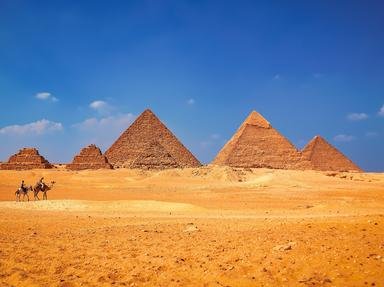Quiz Answer Key and Fun Facts
1. Amarna was not the original name of Egypt's new capital. In fact, its name looks much like the name of the city's founder, Amenhotep IV, who changed his name early in his reign. What was his new name?
2. Why is it relatively easy for archaeologists to study the city of Amarna today?
3. The cliffs around the perimeter of Amarna are carved with writings that give much information about the ancient city's founding. What are these writings called?
4. While much is written about the heresy of Pharaoh Amenhotep IV's attempt to change Egypt's state religion, the excavations of Amarna seem to have proven that while Aten was the main god, he was not the only god worshiped there as previously thought. It appears that Pharaoh did not attempt monotheism, but did try to make his god Aten the most important one. What is this practice called?
5. Archaeological evidence found in the ancient city of Amarna suggests that there were three main sections to the city. There was the North City, where pharaoh's palace was located, and the Southern Suburbs, where many nobles are believed to have lived. What was found in Central City?
6. A royal necropolis, the Royal Wadi, has been found in Amarna that rivals the Valley of the Kings in size and importance.
7. One of the most famous and renowned pieces of Egyptian art was found in Amarna in 1912. It was a bust of the Great Royal Wife created by the sculpture Thutmose. What is the name of the artifact?
8. In 1887 a store of tablets was found in Amarna that were - surprisingly - written in which of the following types of writing?
9. After the death of Amenhotep IV, his successor, Tutankhamen decided to return to the previous capital of ancient Egypt. Where did he go?
10. While Claude Sicard appears to have made the first western discovery of Amarna in 1714, whose men made the first detailed modern map of the ancient city?
Source: Author
ponycargirl
This quiz was reviewed by FunTrivia editor
bloomsby before going online.
Any errors found in FunTrivia content are routinely corrected through our feedback system.
